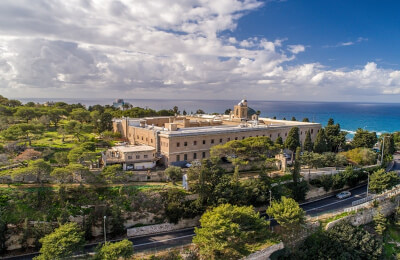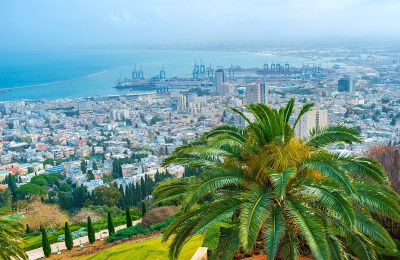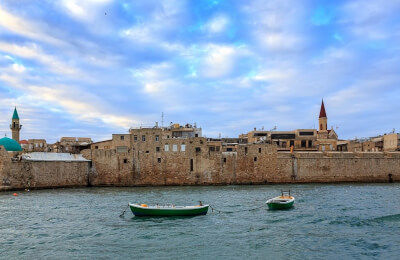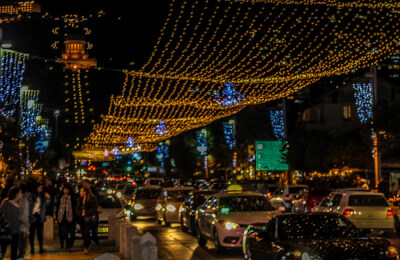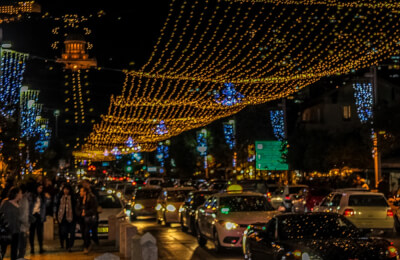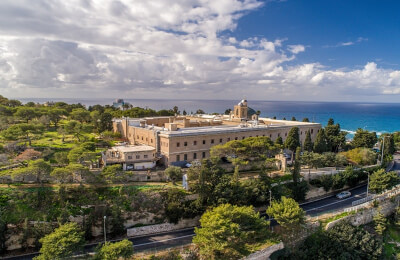
46. Haifa and Tel Dor Park Promotion

156. Haifa and boat ride Promotion
518. Evening Haifa Promotion
544. New Year's Haifa Promotion
 225₪
225₪
 225₪
225₪
508. Christmas in Haifa Promotion
550. Nazareth and Haifa Promotion
 150₪
150₪
 150₪
150₪
We also found excursions from other cities that are close to your departure city
Other excursions that also deserve your attention
The German Colony in Haifa: A Historic Gem
Haifa, Israel's third-largest city, is renowned for its picturesque setting on the slopes of Mount Carmel, overlooking the Mediterranean Sea. While the city boasts an eclectic blend of cultures and histories, one of its most captivating landmarks is the meticulously restored German Colony. This precinct provides a glimpse into a fascinating chapter of Haifa's history while also serving as a vibrant hub of modern-day life.
Historical Foundations
The story of the German Colony begins in the latter half of the 19th century, driven by a religious community from Germany. 1. The Templers: In the 1860s, a German Protestant group known as the Templers began establishing colonies in the Holy Land. Their goal was not colonial in the traditional sense; rather, they sought spiritual redemption by leading a communal life in the Holy Land. They believed that by doing so, they would hasten the Second Coming of Christ. 2. Founding the Colony: In 1868, the first group of Templers arrived in Haifa and laid the foundation for what would become the German Colony. They built homes, community institutions, and businesses, gradually transforming the landscape of the city. 3. World Wars and Aftermath: The Templers’ German origins led to complexities during both World Wars. During WWI, the British, suspecting the Templers of harboring pro-German sentiments, interned many of them. WWII further complicated matters. After the war, the State of Israel was established, and most Templers relocated to Germany or Australia. The homes and structures they left behind fell into disrepair for many years.
Architectural Elegance
Walking down the main street of the German Colony, one is immediately struck by the distinct architectural style. 1. Templer Homes: Characterized by red-tiled roofs, stone construction, and beautifully carved wooden details, the Templer homes reflect a blend of German precision and local materials. Many homes also bear inscriptions from the Bible, underscoring the community's religious fervor. 2. Restoration Efforts: In the late 20th and early 21st centuries, the municipality of Haifa undertook significant efforts to restore the German Colony to its former glory. Today, it stands as a shining example of preservation, with many original buildings having been meticulously restored.
Modern Vibrancy
While the German Colony's history is undoubtedly captivating, it is the area's modern-day charm that draws both locals and tourists. 1. Dining and Nightlife: The colony's main thoroughfare, Ben Gurion Boulevard, is lined with a diverse range of cafes, restaurants, and bars. Whether one is in the mood for a traditional German meal, a Middle Eastern feast, or a gourmet experience, the German Colony offers it all. 2. Shopping: Boutique shops and artisanal stores dot the streets, providing a unique shopping experience far removed from typical malls and commercial centers. 3. Events: The German Colony often plays host to cultural events, music festivals, and art exhibitions, turning the area into a buzzing hive of activity, especially during the evenings and weekends.
Points of Interest
1. The Baháʼí Gardens: The German Colony offers a direct view of the Baháʼí Gardens, one of Haifa's most renowned landmarks. These meticulously landscaped terraced gardens ascend Mount Carmel and culminate at the golden-domed Shrine of the Báb. 2. Community Buildings: Several original Templer community structures, like the community hall and school, can still be seen today, offering a tangible link to the past. 3. Museums: The German Colony houses museums that delve into its history and the broader history of Haifa. These institutions provide a deeper understanding of the Templer community and their impact on the region.
Conclusion
The German Colony in Haifa stands as a testament to the city's layered history and its ability to adapt and evolve. As the sun sets, casting a golden hue on the red-tiled roofs, and the Baháʼí Gardens glow in the twilight, one can't help but be enraptured by the blend of history and modernity that the German Colony embodies. It serves as a poignant reminder of the diverse groups that have contributed to the rich tapestry of Haifa's heritage, ensuring that the city's past is ever-present amidst its contemporary vibrancy.




